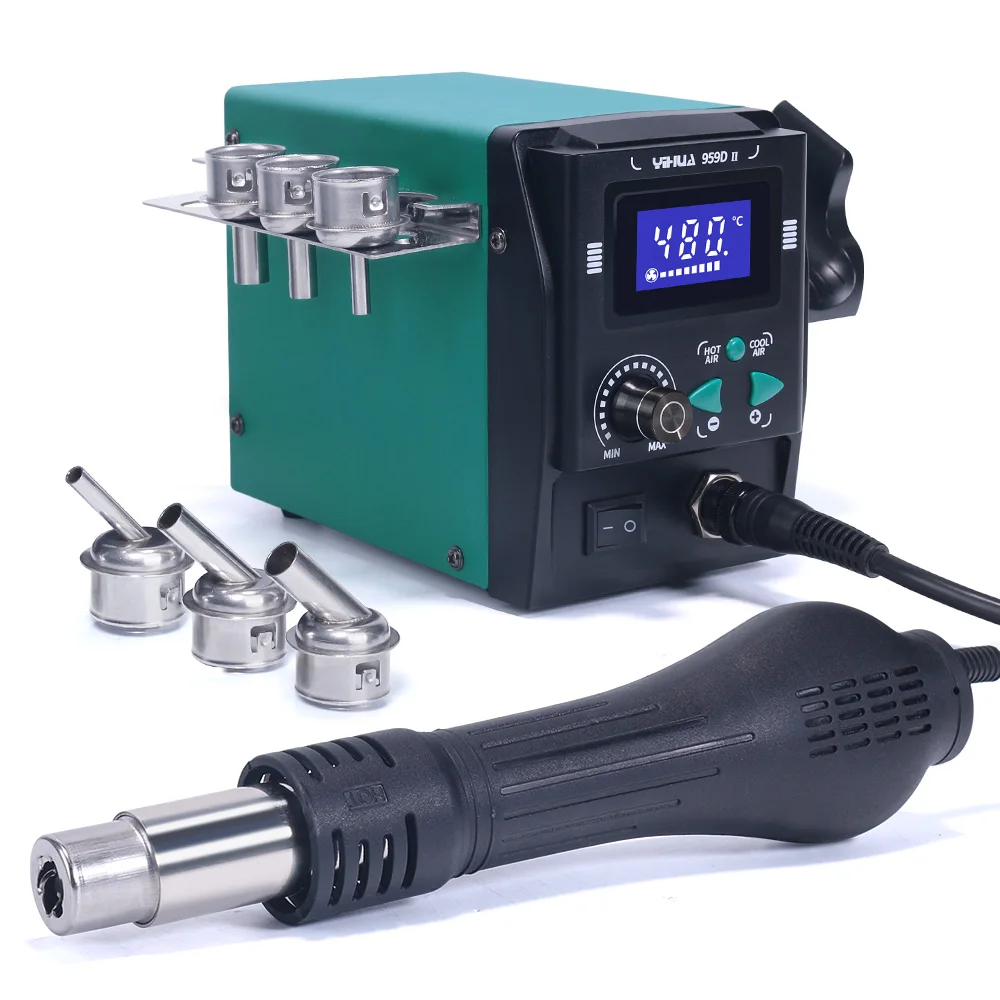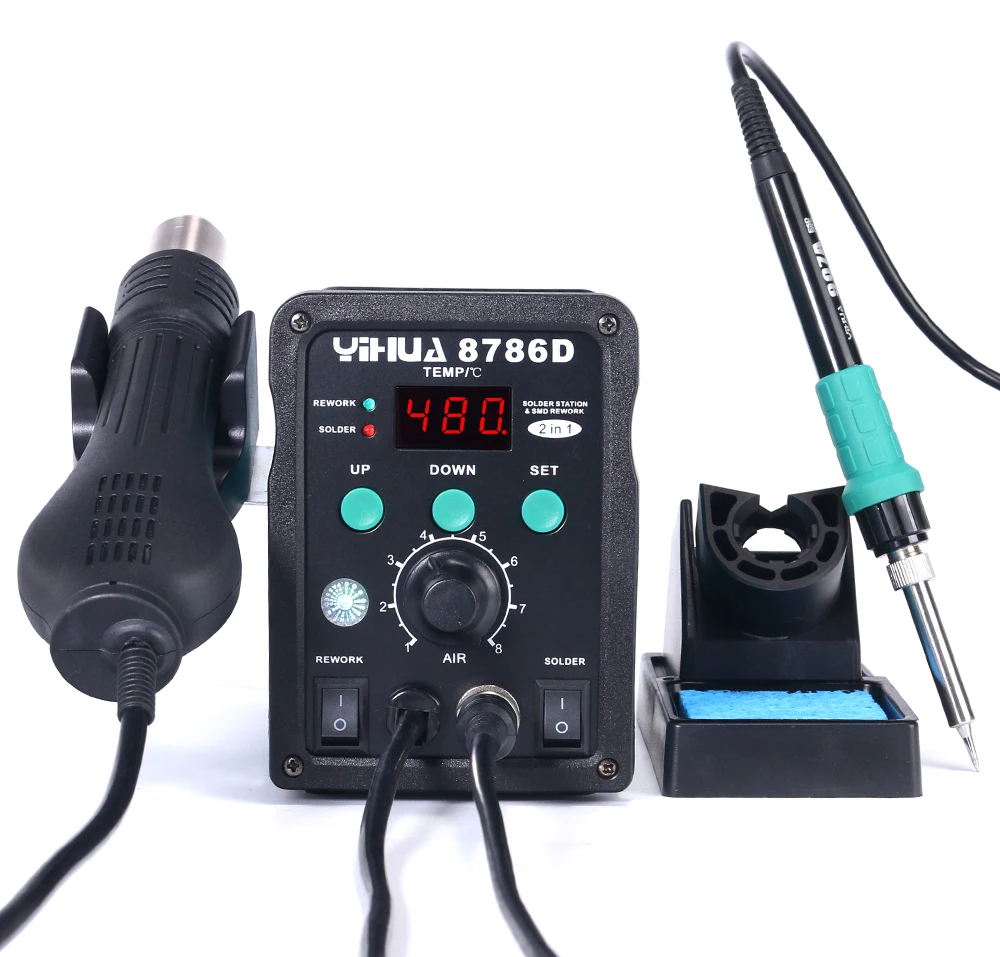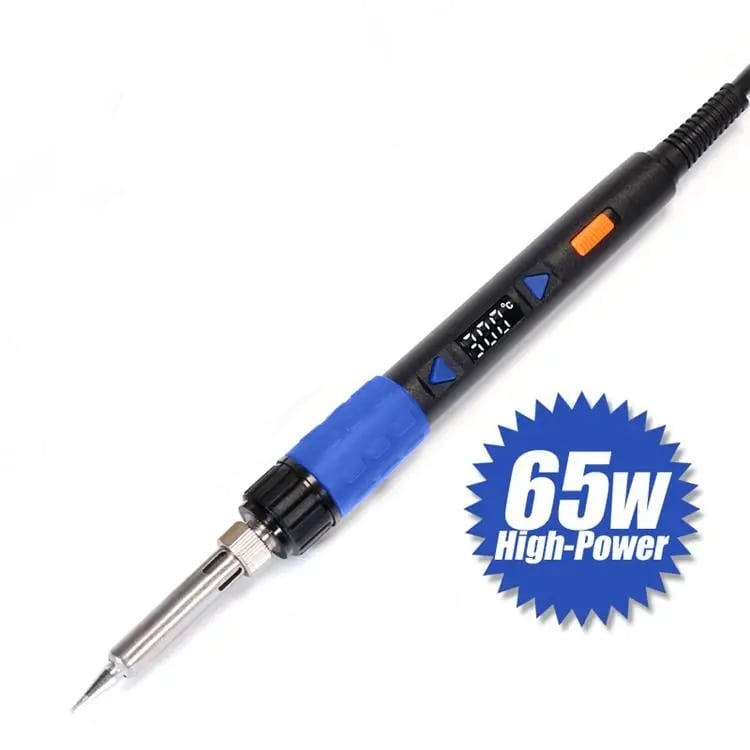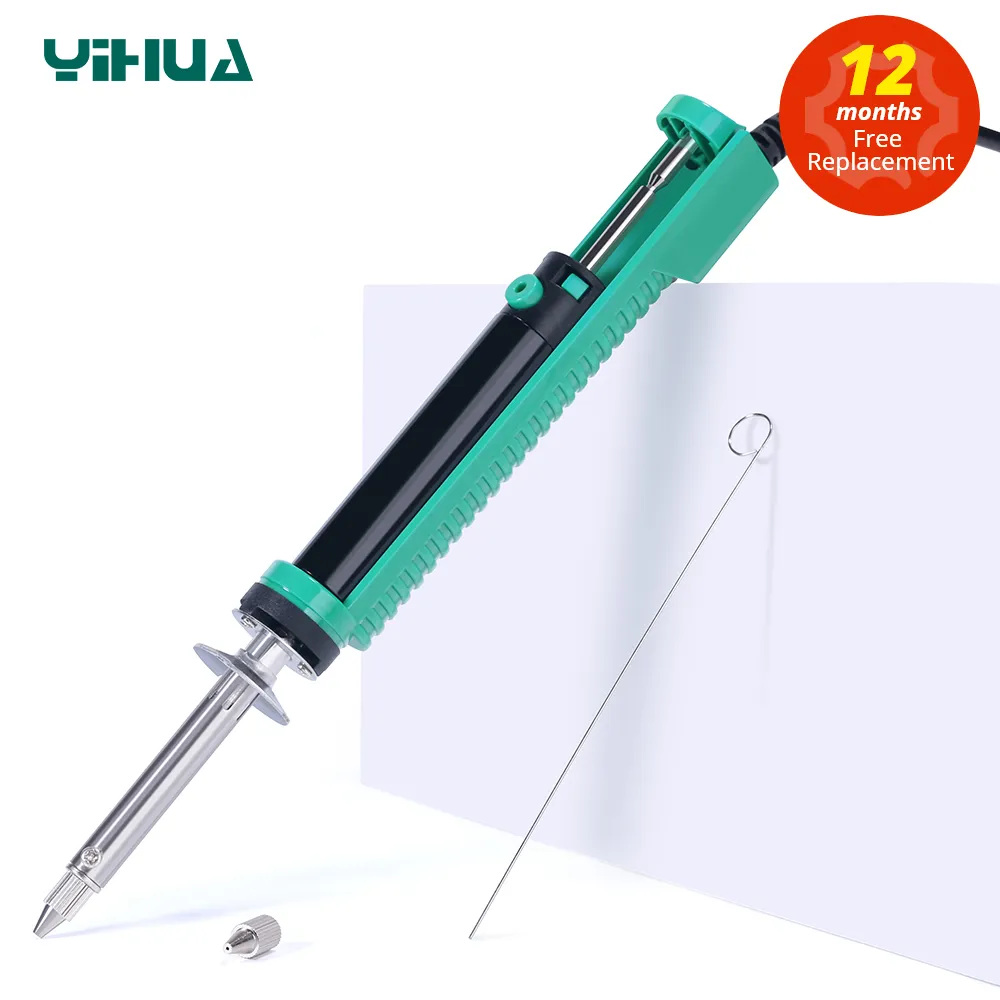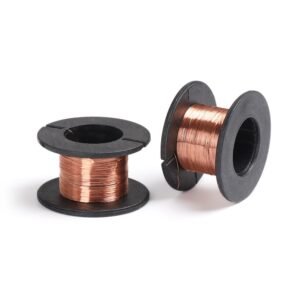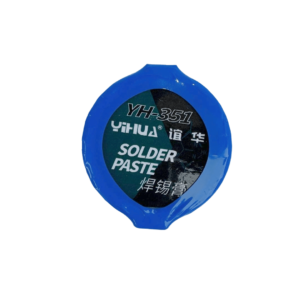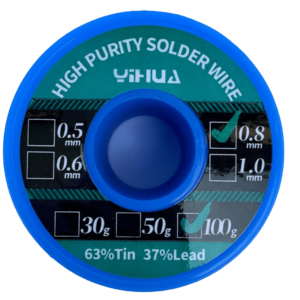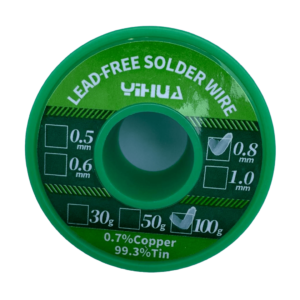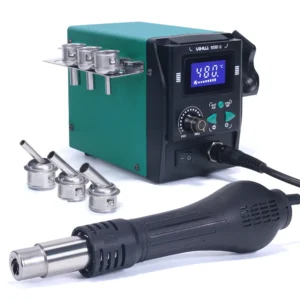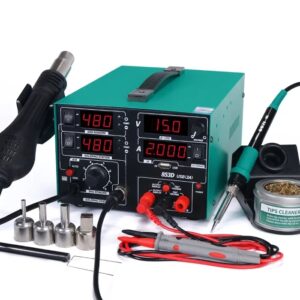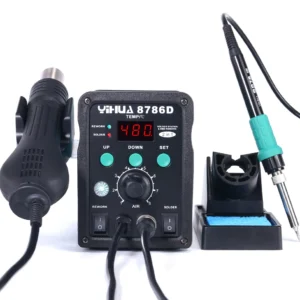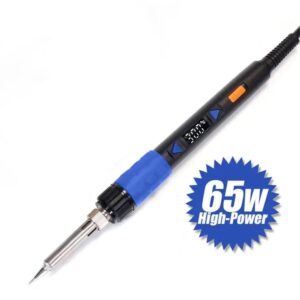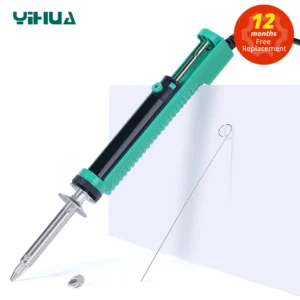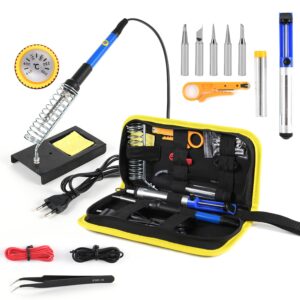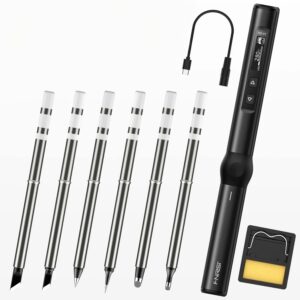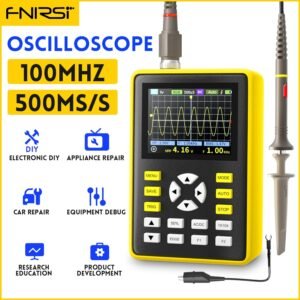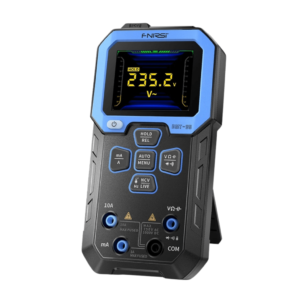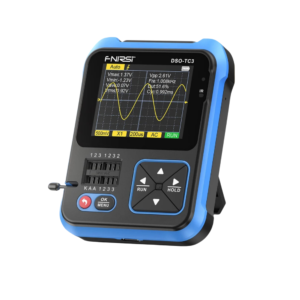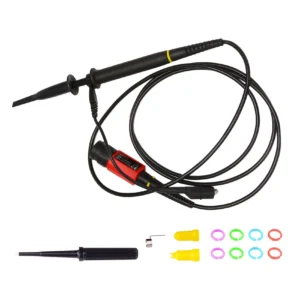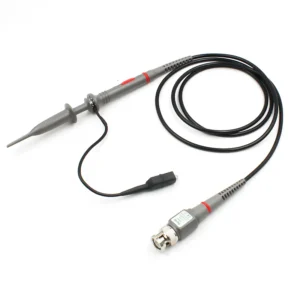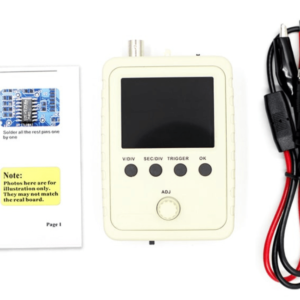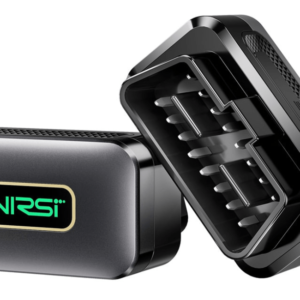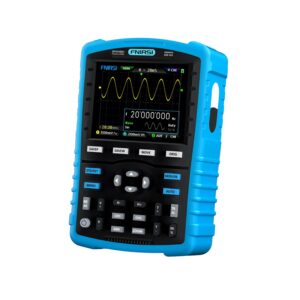Temperature control plays a critical role in soldering processes, exerting a significant influence on both the quality of workmanship and the safety of the practitioner. This discussion delves into the paramount importance of temperature control in soldering, elucidating its implications on soldering quality and the imperative of maintaining a safe working environment.
An examination of temperature control mechanisms in soldering irons is undertaken, differentiating between manual and digital control systems, as well as adjustable and fixed temperature settings. Insights are provided on effective techniques for managing temperature regulation in soldering irons, along with recommendations on how to avoid common errors such as overheating or utilising incorrect temperature settings for specific tasks.
For individuals seeking to enhance their soldering proficiency and achieve superior outcomes, acquiring a comprehensive understanding of temperature control nuances and honing the skill of precise temperature management is essential.
What is Temperature Control?
Temperature control in soldering irons heating element pertains to the capacity to meticulously regulate heat output for the purpose of ensuring precision during the soldering procedure.
The maintenance of appropriate temperature levels is paramount in achieving dependable and high-calibre soldering connections. Contemporary soldering equipment integrates advanced technology such as digital temperature displays, adjustable settings, and swift heat recovery capabilities, thereby enhancing the efficiency and efficacy of soldering tasks.
By upholding a uniform temperature throughout the soldering process, the likelihood of component overheating is minimised, facilitating the smooth flow of solder and leading to robust and enduring connections. This level of accuracy elevates the overall efficiency and quality of electronic assembly endeavours.
The Importance of Temperature Control in Soldering
The significance of temperature control in soldering is paramount, as it is instrumental in facilitating effective and high-quality solder joints. Furthermore, proper temperature control helps safeguard heat-sensitive components from potential damage, thereby enhancing overall safety and performance standards.
Effects on Soldering Quality
Precise temperature control is a critical factor in determining the quality of soldering work, as it ensures consistency and accuracy in the formation of solder joints. Control knobs play an essential role in facilitating this precision by enabling soldering technicians to adjust the temperature to the precise level required for the specific soldering task at hand. By meticulously adjusting the temperature settings through these control knobs, solder joints can be formed consistently and reliably, resulting in robust and durable connections.
This meticulous attention to detail and the capability to maintain a stable temperature throughout the soldering process not only enhances the overall quality of the joints but also reduces the likelihood of defects or weak points in the final product.
Impact on Safety
Temperature control plays a significant role in ensuring safety by mitigating the risks associated with overheating and underheating during the soldering process. Maintaining the appropriate temperature is paramount in soldering, as overheating can cause damage to components, failure of solder joints, or even pose fire hazards. Conversely, underheating can lead to inadequate solder connections, resulting in the malfunction of circuits or product failure. An efficient temperature control system is instrumental in regulating heat output, thereby ensuring that the soldering process occurs within the optimal temperature range. This not only improves the quality of solder joints but also fosters a safer working environment by reducing the possibility of accidents or injuries due to extreme temperatures.
Types of Temperature Control in Soldering Irons
There are multiple types of temperature control mechanisms in soldering irons, ranging from manual control with adjustable settings to digital control systems that provide improved accuracy through digital displays.
Manual vs. Digital Control
Manual control soldering irons are characterised by a simple control knob used to regulate the temperature, while digital control irons are distinguished by a digital display that enables precise temperature adjustments. Digital control irons present the advantage of enhanced temperature accuracy, facilitating meticulous control essential for intricate soldering tasks. The real-time feedback provided by the digital display simplifies the monitoring and adjustment of temperature settings.
Moreover, digital control irons often incorporate programmable temperature presets, streamlining operations, and diminishing the likelihood of errors. Conversely, manual control irons are valued for their simplicity and robustness, as they typically feature fewer electronic components that could potentially malfunction. This makes manual control irons a dependable choice for routine soldering activities.
Adjustable vs. Fixed Temperature
Best Soldering irons equipped with adjustable temperature settings provide enhanced flexibility and efficiency in comparison to their fixed temperature counterparts, which are pre-set to a singular temperature. The increased adaptability afforded by adjustable temperature soldering irons allows users to effectively work on a diverse array of components with varying heat requirements, eliminating the need for frequent transitions between different soldering irons. This streamlined process not only saves time during project execution but also mitigates the potential risk of damaging delicate components.
Conversely, fixed temperature soldering irons are commonly favoured for straightforward, repetitive tasks that necessitate consistent heat output, thereby obviating the requirement for continual temperature adjustments. A comprehensive comprehension of the specific soldering demands inherent to a given project greatly aids in the selection of the most appropriate type of soldering iron to yield optimal outcomes.
How to Properly Control Temperature in Soldering Irons
Ensuring precise temperature control in soldering irons requires the use of appropriate calibration methods and tools, along with the careful maintenance of the iron tips to ensure consistent operational efficiency.
Tips and Techniques for Accurate Temperature Control
Achieving precise temperature control in soldering requires the application of specific tips and techniques, including regular calibration and performance enhancements. Calibration plays a critical role in ensuring that the soldering iron operates at the appropriate temperature. Regular calibration of equipment is essential to guarantee the strength and reliability of solder joints.
It is advisable to conduct regular performance checks to monitor the consistency of temperature output. This can be achieved by comparing the temperature displayed on the soldering station with that from a separate thermometer. By dedicating time to calibration and performance assessments, one can enhance the quality of soldering work and mitigate the need for potential rework.
Common Mistakes and How to Avoid Them
During the soldering process, common errors such as overheating and underheating can present substantial risks to both the solder joints and the components under operation.
Overheating and Underheating
Excessive heating and insufficient heating are critical errors in soldering that have the potential to harm solder joints and delicate components, thereby presenting notable risks.
The phenomenon of overheating arises when excessive heat is applied during the soldering process, increasing the likelihood of either melting the solder joint or scorching the component. This can lead to substandard electrical connections, compromised joint integrity, and even component malfunction.
Conversely, underheating inhibits the proper bonding of solder, resulting in weak joints that are vulnerable to mechanical strain. To mitigate these issues, it is imperative to utilise appropriate temperature configurations, ensure adequate contact between the soldering iron and the joint, and adhere to the manufacturer’s guidelines for soldering methodologies.
Using the Wrong Temperature for the Task
Utilising an incorrect temperature setting for a particular soldering task can result in substandard solder joints and potential damage to components due to the mismatch in melting points.
Recognising the significance of selecting the appropriate temperature is paramount in attaining reliable and enduring solder connections. Each material present in electronic components possesses a distinct melting point necessitating precise temperature control to facilitate proper bonding.
For example, lead-based solders exhibit a lower melting point in comparison to silver-based solders. By meticulously adjusting the temperature based on the materials being soldered, one ensures that the solder flows seamlessly without experiencing overheating or underheating, thereby yielding robust and steadfast joints capable of withstanding the demands of regular operational use.


